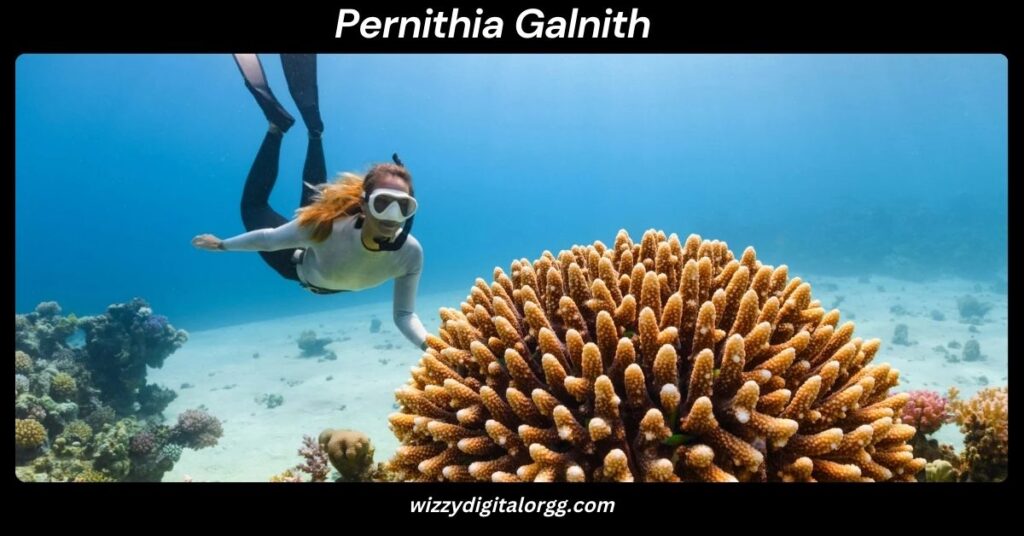
Pernithia galnith is not just a rare species—it’s a biological treasure teetering on the edge of extinction. Found only in secluded, pristine ecosystems, this elusive organism plays a critical role in maintaining environmental balance. As climate change and human interference accelerate its decline, understanding and protecting pernithia galnith has become more urgent than ever. In this article, we’ll explore its ecological significance, the threats it faces, and how we can all contribute to its survival.
What is Pernithia Galnith?
Pernithia Galnith is a rare and enigmatic species that has captured the attention of scientists and conservationists across the globe. While its exact classification within the biological taxonomy is still under research, pernithia galnith is believed to be a keystone species in its native ecosystem. This means that its presence and survival are critical for maintaining the ecological balance where it exists.
Unlike more commonly known species, pernithia galnith is not widely documented in mainstream biology literature. It exists in extremely limited habitats, often in remote and untouched natural environments. Because of its rarity, any changes in its population can serve as early warning signs of environmental degradation or climate instability.

Why Is Pernithia Galnith Important?
Pernithia galnith holds significant value both ecologically and scientifically. Ecologically, it contributes to biodiversity, helps in maintaining soil quality, and supports other species through its interactions in the food chain. Its disappearance could destabilize the local ecosystem, leading to a chain reaction of negative environmental impacts.
Scientifically, studying pernithia galnith can provide insights into evolutionary adaptations, resilience in extreme conditions, and the effects of climate change on delicate species. Because it thrives in specific conditions, it acts as a bio-indicator, helping scientists understand environmental changes and predict ecological shifts.
Moreover, pernithia galnith may have potential in medical or botanical research. Like many rare species, it might contain unique compounds or genetic traits that can be used in developing new medicines or sustainable technologies.
Also Read: Lill94m-Plor4d85: A Global Guide to Its Metabolic and Antioxidant Power
Current Threats to Pernithia Galnith
Habitat Destruction
One of the most immediate threats to pernithia galnith is habitat loss. As human populations grow, natural areas are being cleared for urban development, agriculture, and infrastructure projects. This results in the direct loss of the natural ecosystems that pernithia galnith depends on.
In many cases, deforestation and land conversion have fragmented its habitat. This fragmentation not only reduces the total area available but also isolates populations, making reproduction and genetic diversity difficult.
Climate Change
The rapidly changing climate poses a severe threat to the survival of pernithia galnith. Rising global temperatures, shifts in precipitation patterns, and more frequent extreme weather events like droughts and storms disrupt its natural life cycle.
For a species that relies on specific temperature ranges and microclimates, even minor climatic changes can lead to lower survival rates. These disruptions can affect food sources, mating cycles, and migration patterns, making long-term survival increasingly difficult.
Pollution and Chemical Exposure
Toxic pollutants such as heavy metals, plastics, and industrial waste have found their way into even the most remote environments. For a sensitive species like pernithia galnith, exposure to these chemicals can be fatal. Even small amounts can damage reproductive organs, immune systems, or cause developmental deformities.
Agricultural runoff, particularly pesticides and herbicides, also poses a grave risk. These substances not only contaminate water sources but also destroy the microflora and fauna that pernithia galnith may rely on for survival.
Illegal Trade and Human Interference
Although not widely publicized, there are reports of collectors and illegal traders targeting rare species, including pernithia galnith. The exotic nature of this species makes it a target for private collections and black-market trade.
Unregulated tourism and recreational activities in natural habitats also contribute to habitat degradation. Foot traffic, littering, and the introduction of invasive species can all impact the fragile ecosystems where pernithia galnith resides.
Where Is Pernithia Galnith Found?
Pernithia galnith is found in highly specific regions where the environmental conditions are just right for its survival. These areas are typically remote, undisturbed, and rich in biodiversity. Examples include dense rainforests, misty mountain ranges, hidden wetlands, and unpolluted riverbanks.
Researchers often keep the exact locations confidential to protect the species from exploitation and interference. What is known is that these regions generally have rich soil, a stable water supply, and minimal human intrusion.
In recent years, satellite technology and drone-based surveys have helped scientists monitor these areas without disturbing the local environment. These innovations are proving vital for understanding and protecting the remaining populations of pernithia galnith.
Also Read: General News LogicalShout: Making Complex News Easy for Everyone
Conservation Efforts for Pernithia Galnith
Protected Areas
Governments and international conservation groups have established protected zones to safeguard pernithia galnith. These reserves are monitored by rangers, researchers, and conservationists to prevent illegal activities and maintain the integrity of the ecosystem.
The establishment of these areas involves not only legal protection but also active restoration efforts, such as replanting native vegetation, controlling invasive species, and building sustainable infrastructure for minimal-impact tourism.
Research and Monitoring
Long-term scientific studies are being carried out to understand the life cycle, mating habits, dietary needs, and migratory behaviors of pernithia galnith. Such data help in formulating precise conservation plans tailored to the needs of the species.
Advanced tools like camera traps, bioacoustics, and satellite imagery are also used to track changes in population density and habitat conditions. These technologies allow for non-invasive monitoring and quick response to threats.
Community Involvement
Engaging local communities is one of the most effective strategies in conservation. Educational programs, eco-tourism initiatives, and community-led stewardship projects have shown great success.
By involving locals as partners in conservation, it becomes easier to monitor protected areas, report illegal activities, and ensure that economic needs are met through sustainable practices rather than environmental exploitation.
Global Cooperation
International partnerships and funding mechanisms are essential in the fight to save pernithia galnith. Organizations such as the IUCN, WWF, and various UN programs provide the necessary support to carry out large-scale conservation projects.
Collaborative research and shared databases also enable scientists from different parts of the world to work together, comparing findings and refining conservation strategies based on shared experiences.
How You Can Help Save Pernithia Galnith
Spread Awareness
Educating others about the importance of pernithia galnith is the first step in making a difference. Sharing articles, hosting awareness events, and engaging in discussions can help build a larger support network.
Digital platforms can amplify this message to global audiences, and even a simple post can inspire others to learn more and take action.
Support Conservation Groups
Donating to verified conservation organizations or volunteering your time can have a meaningful impact. These groups often rely on public support to fund habitat restoration, research projects, and community outreach programs.
Also Read: LogicalShout: Your Trusted Source for Simple, Clear, and Useful Content Online
Even small contributions can help provide equipment, pay field staff, or sponsor educational materials.
Reduce Your Carbon Footprint
By making eco-friendly choices, such as using renewable energy, reducing plastic use, and supporting sustainable agriculture, you indirectly help species like pernithia galnith by preserving their habitat.
Consider using public transportation, recycling regularly, and choosing products with lower environmental impact to contribute to a healthier planet.
Advocate for Policies
Engage with your local and national government representatives to support policies that prioritize environmental protection. Stronger laws on pollution, deforestation, and wildlife protection are essential to safeguard species like pernithia galnith.
Signing petitions, attending town hall meetings, and voting for environmentally-conscious leaders are ways to make your voice heard.
Unique Characteristics of Pernithia Galnith
Adaptability to Harsh Environments
Despite its endangered status, pernithia galnith has shown remarkable adaptability. It can survive in harsh terrains where other species cannot. This resilience makes it an important subject of study for understanding climate adaptation.
Some populations have been observed adjusting their feeding or breeding patterns in response to environmental pressures, offering insights into how nature responds to climate-induced stress.
Role in the Ecosystem
Pernithia galnith plays multiple roles. It acts as a pollinator, disperses seeds, and serves as a food source for various predators. Its presence helps in nutrient cycling, soil aeration, and maintaining plant health.
Removing such a key species from an ecosystem can lead to overgrowth of certain plants, collapse of predator populations, and decline in biodiversity.
Slow Reproduction Cycle
One of the most challenging aspects of protecting pernithia galnith is its slow reproductive rate. It produces few offspring, and the survival rate of young individuals is low due to environmental threats and predation.
This makes recovery efforts much slower and necessitates long-term conservation planning.
Misconceptions About Pernithia Galnith
It’s Just Another Rare Species
Many people believe that pernithia galnith is just one of many endangered species. While it is rare, it holds unique ecological importance that makes its preservation more critical than many realize.
Its extinction could lead to the destabilization of entire ecosystems, causing further losses of biodiversity.
Conservation Is Not Urgent
There is a dangerous misconception that there’s still time to act. However, many experts argue that we are approaching a tipping point. Without immediate intervention, pernithia galnith could become extinct within a few decades.
Long-Term Survival Strategies
Habitat Restoration
Restoring damaged habitats is essential. This includes planting native trees, removing pollutants, reintroducing lost flora and fauna, and protecting watersheds. These actions help create a stable environment for pernithia galnith to thrive.
Captive Breeding Programs
Zoos and research institutions are working on breeding programs. These controlled environments provide the necessary care and security for increasing population numbers. Once stable, individuals are reintroduced into the wild.
Such programs also offer a safety net in case wild populations collapse.
Advanced Genetic Research
Modern genetics offer hope. By studying the DNA of pernithia galnith, researchers can identify genes linked to disease resistance, adaptability, and fertility. Gene editing or assisted breeding could be future tools in its preservation.
Also Read: Boston Celtics vs Dallas Mavericks Match Player Stats: A Comprehensive Analysis
Global Case Studies
Example: The Rainforest Initiative
In a South American country, a coalition of local governments and international NGOs worked together to protect a rainforest. This project led to the discovery of new pernithia galnith populations and helped stabilize their numbers through habitat protection.
Example: Local Stewardship in Mountain Regions
In an Asian highland region, local villagers created a co-managed reserve. By integrating eco-tourism and conservation, they generated income while preserving pernithia galnith’s habitat. This project became a model for community-driven conservation worldwide.
Future of Pernithia Galnith
The future of pernithia galnith is uncertain but not hopeless. With sustained efforts, scientific breakthroughs, and collective global will, this species can be saved. The key is urgent and coordinated action.
Saving pernithia galnith also means preserving our planet’s health. Its survival symbolizes our commitment to protecting Earth’s natural beauty and diversity.
FAQs About Pernithia Galnith
What is pernithia galnith?
It is a rare, ecologically vital species that is currently endangered due to habitat destruction and climate change.
Where can you find pernithia galnith?
In remote, ecologically rich areas such as untouched forests, mountain valleys, and wetland ecosystems.
Why is pernithia galnith endangered?
Because of habitat loss, pollution, climate change, illegal trade, and a naturally slow reproduction cycle.
Can pernithia galnith be saved?
Yes, through habitat protection, captive breeding, scientific research, and public awareness.
How can I help?
Support conservation groups, spread awareness, reduce your carbon footprint, and advocate for strong environmental policies.
Is pernithia galnith real?
While lesser-known, it is a genuine subject of environmental and scientific interest and plays a real role in conservation discussions.
Conclusion
Pernithia galnith is more than just an endangered species. It is a symbol of our planet’s fragility and the urgent need for global conservation. By learning, sharing, and acting today, we can ensure that future generations will live in a world rich with biodiversity and natural wonder. Saving pernithia galnith is not just an act of preservation—it is a pledge to protect all life on Earth.



